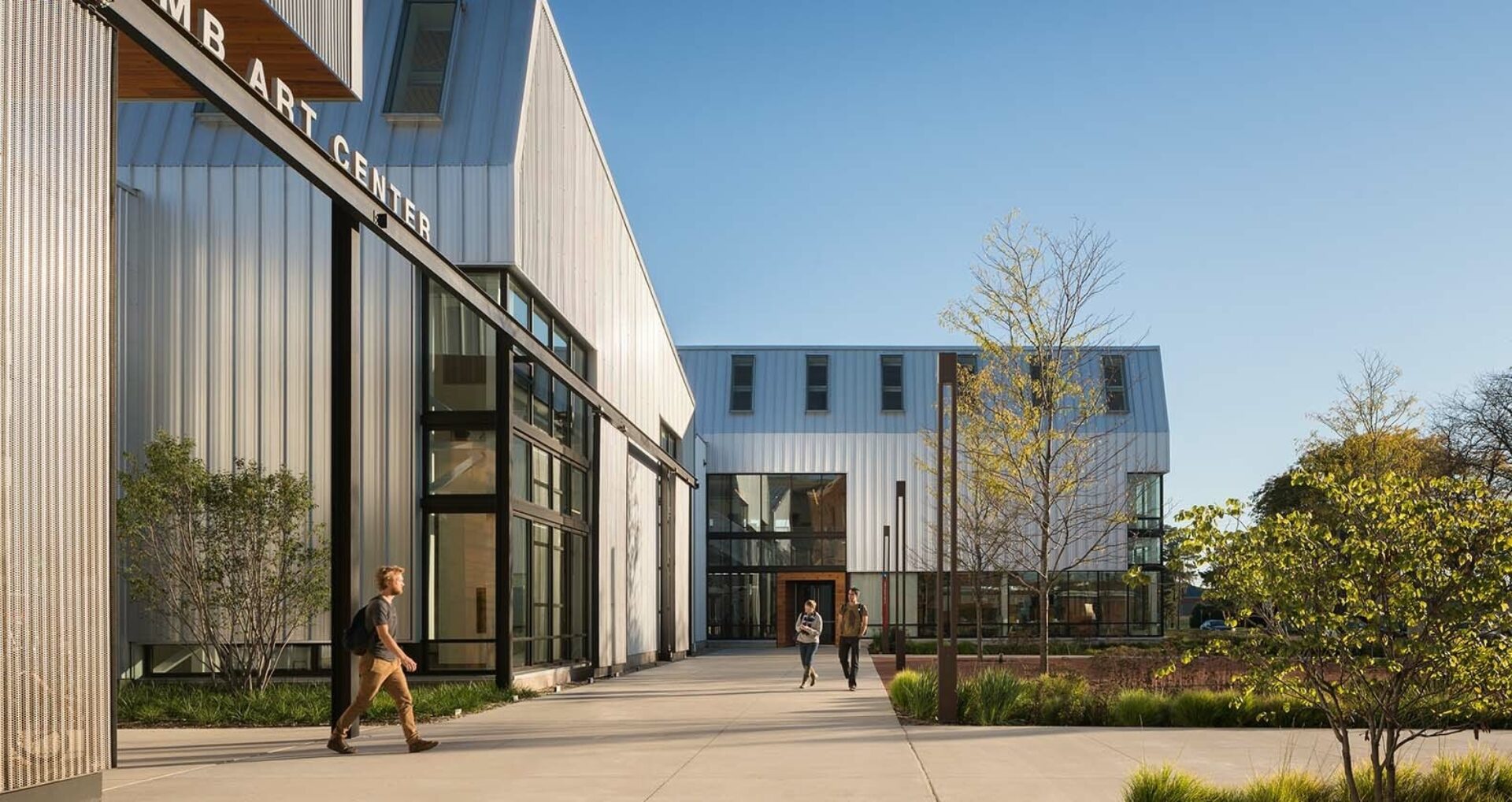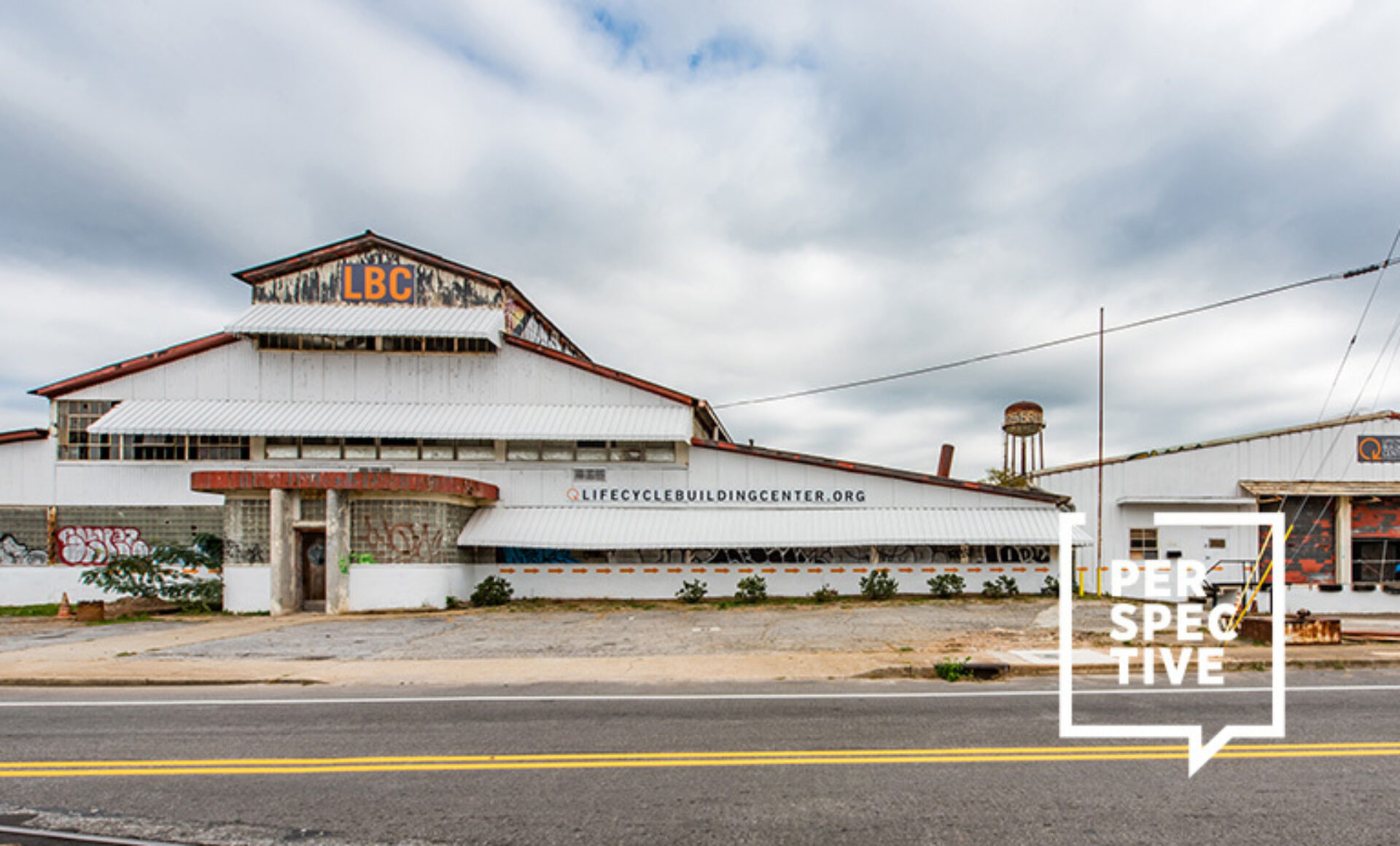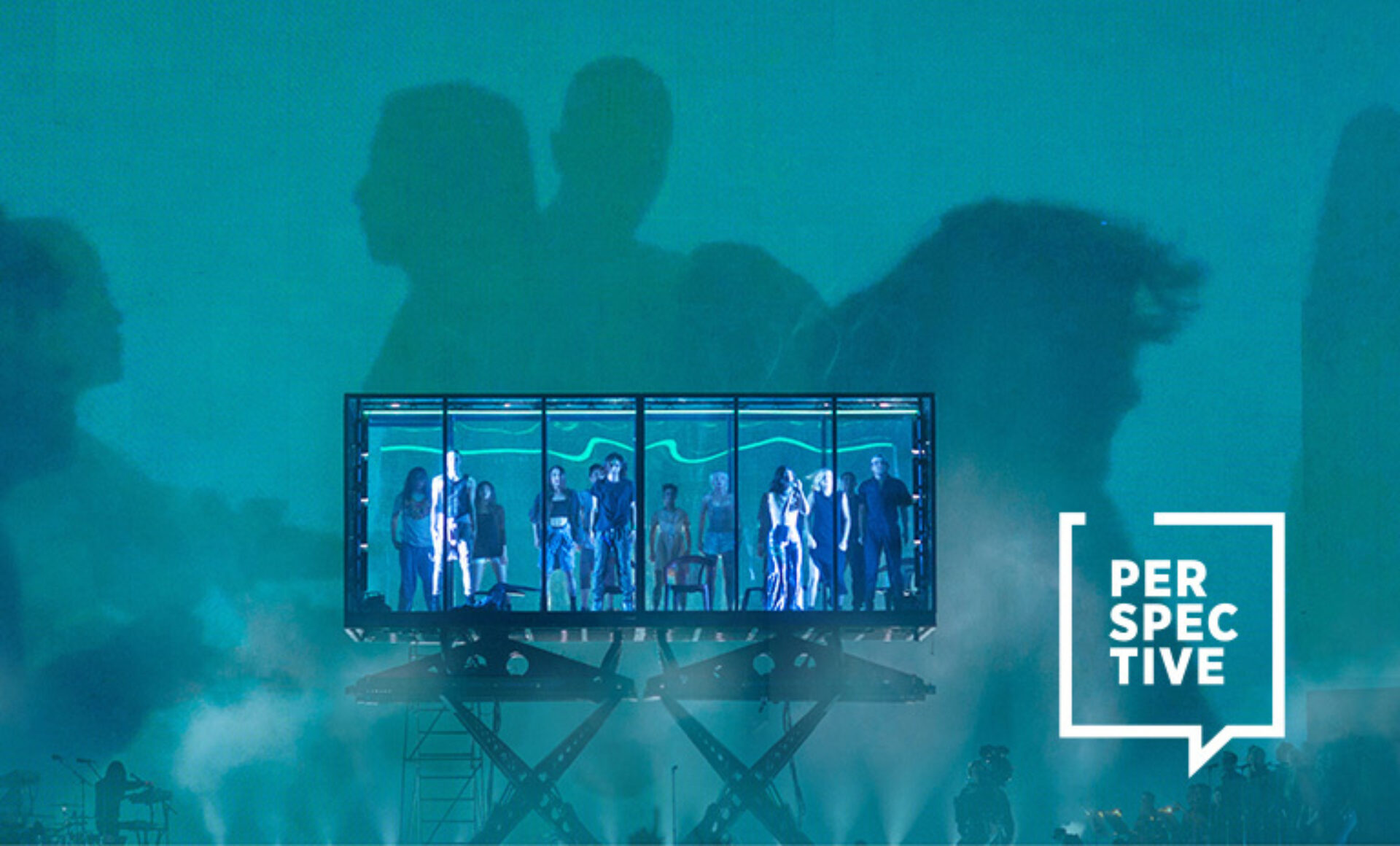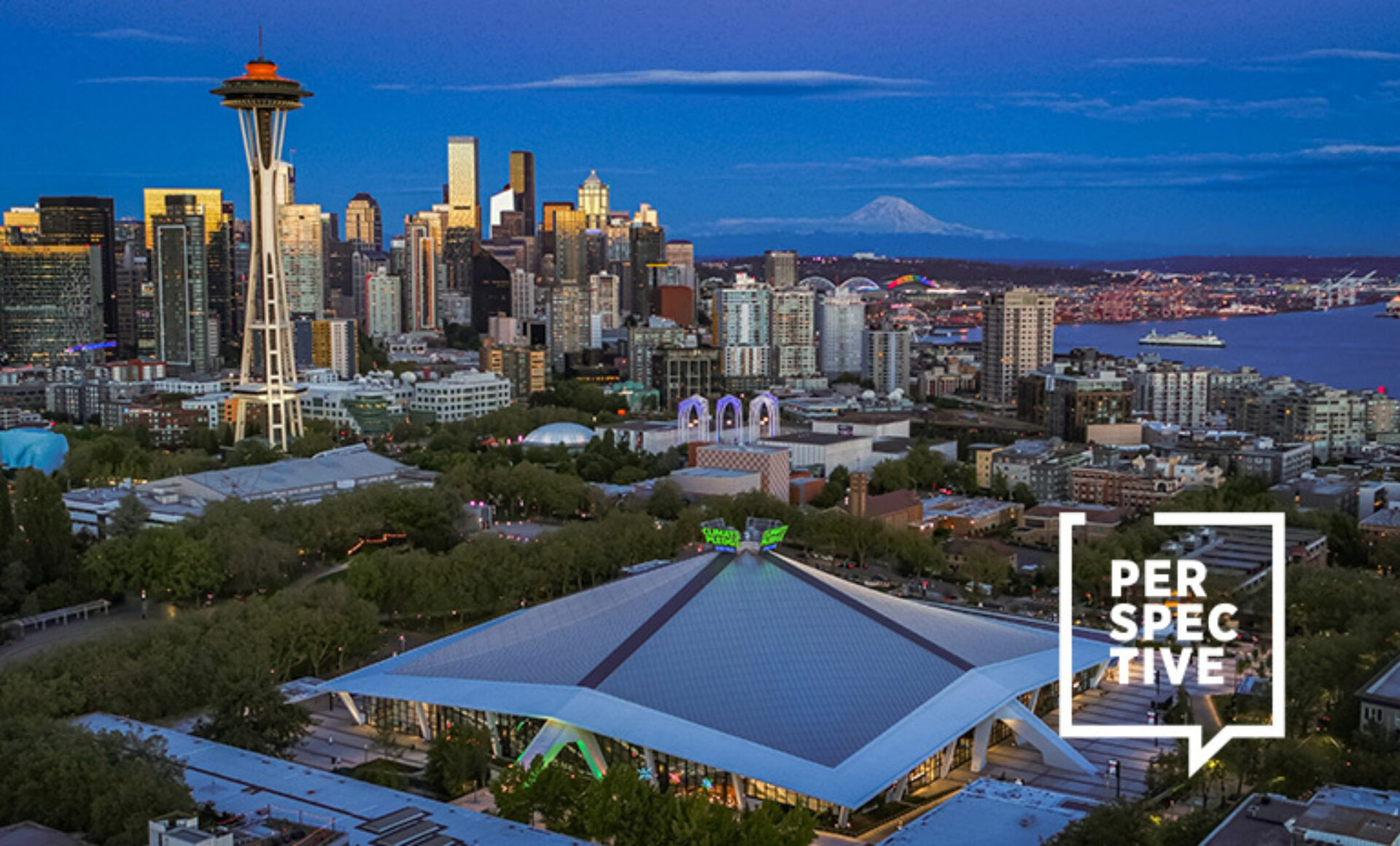This article originally appeared in the March/April Issue of interiors + sources magazine
Lake|Flato has been at the forefront of sustainable design since 1984. Founded in San Antonio, Texas, they have been designing buildings that are serene, inviting, and aesthetically beautiful, while they also respond to the unique culture and climate of each place—from a ranch house sandwiched between the Chihuahuan Desert and the majestic Davis Mountains, to an immersive retail experience for YETI, to member’s club and hotel, Soho House in Austin, to a 1900s brewery. The award-winning firm’s biggest achievement: building on the intimate relationship between place and belonging by creating spaces where people, architecture and nature seamlessly integrate.
Focusing on finding paths to make change possible, Heather Gayle Holdridge, director of design performance, and Kate Sector, design performance manager, discuss Lake|Flato’s sustainability and wellness strategies, their milestone of reaching across the board net-zero emissions, and their vision to enhance our understanding and relationship to the natural world by creating spaces where design and nature peacefully coexist. Read their collective responses below:
What sets Lake|Flato apart?
Lake|Flato is an architecture firm based in San Antonio seeking to transform the built environment by understanding whole living systems and deepening our connection to the natural world. The constructive disruption we create is transforming the field of architecture to value performance and biophilia. We see buildings as instruments for engaging a much more holistic scope, where architecture merges with landscape; where humans are nature, and enclosed interior spaces actively engage the outdoors, blurring the line between inside and out beyond recognition. Lake|Flato also looks to nature and regional climatic conditions to inform building performance, conserving scarce resources, and leveraging abundant resources through passive strategies.
Since 2007 you have offset 100% of your office- and travel-related carbon dioxide emissions. How did you do it?
We track and reduce our carbon first, then offset with renewables and offsets. We’ve done this using several providers over the years, but in 2020 we selected CoolEffect for its transparency, close involvement in project selection, and ability to send 90.13% of funds from carbon offset purchases to its project. They meet the Gold Standard Certification and fund projects that have social benefits as well as verifiable carbon offsetting.
We also recently renovated our office space, and one of the goals of the renovation was to achieve the International Living Future Institute Zero Carbon building certification. The Zero Carbon Certification requires that “100% of the operational energy use associated with a project must be offset by new on- or off-site renewable energy; 100% of the embodied carbon emissions associated with the construction and materials of a project must be disclosed and offset.” By achieving zero carbon in both operational and embodied carbon, we can also demonstrate our commitment to the AIA 2030 Commitment goal of meeting carbon neutrality by 2030.
Part of the renovation included reducing our energy demand first, then offsetting the remaining energy needs with more solar panels. There were lots of opportunities to reduce our energy demand through strategies such as introducing a new, more efficient HVAC system, reducing plug loads, as well as metering our circuits to track energy use and adjust during occupancy. Although we were able to reduce our energy demands, increasing our solar energy generation was necessary. To achieve net-zero energy in the high-density urban core with limited roof space, we partnered with Big Sun Solar to add off-site solar generation to our project. Big Sun Solar is a San Antonio-based company that builds, manages, and maintains both on- and off-site solar within the San Antonio area. Our off-site solar is a 201-kW array that produces approximately 265,000 kWh/year. This is equivalent to reducing 30,969 co2 tons per month which is equivalent to planting 489 trees a month.
Today, it is of utmost importance that design teams understand the issues surrounding climate change. What are some steps you’re taking toward vetting and engaging with clients, suppliers, manufacturers, and contractors to ensure that the materials and techniques used will radically reduce carbon emissions?
More often, we have brought up embodied carbon on new projects as a sustainability goal clients should consider. Many of our projects begin with an Integrated Design Workshop, where we will discuss big ideas and aspirations on how to design a low-carbon project. If we are tracking embodied carbon on a project, we start with testing different low-carbon design options, running life cycle assessments, and trying to specify EPDs (Environmental Product Declarations) that outline what their embodied carbon impact is and compare them to other products to find the best low-carbon option. If a manufacturer we want to use does not have an EPD, we will sometimes send them a letter advocating for one.
Lake|Flato is also proud to have participated and reported in the AIA 2030 Commitment Program since its inception. The AIA 2030 Commitment is an actionable climate strategy that gives us a set of standards and goals for reaching net zero emissions in the built environment, and we use it to track, record and reduce carbon across our portfolio.
Tell us about your urban development projects, like Pearl Brewing District. How do they illustrate their ethos of preserving natural resources, historic elements, and conserving energy as much as possible?
The Pearl Brewery Redevelopment Master Plan and the adaptive reuse of the Full Goods Warehouse serve as a model and catalyst for green urban revitalization in a long neglected portion of San Antonio’s inner city. After 15 years lying derelict, the creative reuse of this 26-acre brownfield site and its neglected structures are drawing in a mix of new residents, small businesses, retail and non-profits while emphasizing community, conservation and local economic development. This is a new community meeting ground where visionary private development and public space come together to create a vibrant urban destination.
The 67,000 square foot LEED Gold Full Goods warehouse is one of the jewels of the Pearl Brewery Redevelopment. Full Goods is a modern retelling and reflection of the building’s industrial past as a brewery warehouse, and served as the model for attractive sustainable development becoming a catalyst for community revitalization. The original one-story building was adapted to include two floors, maximizing density and providing live/work spaces for local businesses connected by a series of catwalks.
The goal of the Pearl Brewery Redevelopment was to create a sustainable destination that maintained the identity of the historic brewery while radically repurposing key parts of the compound. The multiphase development began with the repurposing of existing buildings. The completion of the first three phases, especially the adaptive reuse of Full Goods Warehouse, has ignited the planning and development of adjacent areas with the intentional focus on incubating local business.
Beyond the built structure, what kinds of sustainability and wellness strategies do you employ when considering interiors and the lived experience?
Lake|Flato employs practical and thoughtful sustainable strategies that conserve resources, engage nature, and promote healthy living through buildings that are rooted to their place. We strive to create restorative environments that design interiors that enhance our understanding and relationship to the natural world.
By recognizing sustainable design and construction in projects globally, we often look to LEED, the Living Building Challenge, WELL, Passive House, and many other certification programs to help clients and building professionals differentiate their projects. The strength of these programs is third-party verification, serving as a quality control process to ensure that the building performs as designed. Occupant comfort and wellbeing is hugely important in our design process, and these programs help us incorporate strategies including low VOC materials, red list free materials, biophilia and connection to nature and place and good daylight and indoor air quality.
In what ways do you foster the education of the next generation?
We often host training and presentations on embodied carbon and material health internally, which is helpful for younger designers as they are the next generation. Kate Sector, our design performance coordinator, is co-chair of the AIA Committee on the Environment in San Antonio, which often hosts events focused on embodied carbon and other sustainability topics which helps to share ideas and grow community knowledge. Members of our firm also often present to various college universities and participate in lectures and design reviews, often sharing case studies on lessons learned and design performance strategies.
In 2023, we are continuing to work with each studio within the firm to set and track their goals throughout the year, and one we are encouraging teams to look at is creating low-carbon specifications and running life cycle assessments on their projects. Our new office also includes a large space designated for a materials library, and our goal for this year is to ensure we populate it with healthy and low-carbon building materials as an office resource.














